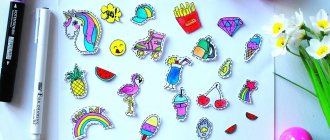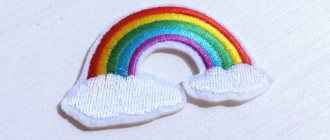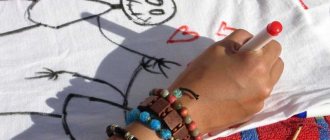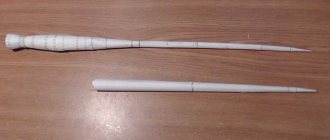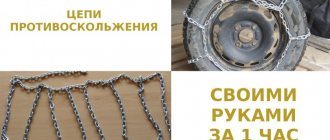Each of us has entire folders of important documents that need to be carefully protected and kept safe and sound. But ordinary folders purchased in a store quickly deteriorate and do not have an attractive appearance. Therefore, in this master class we will learn how to make a bright and unusual document folder with our own hands. For this we will not need a lot of money and time, and the result will exceed all your expectations and fantasies. The scrapbooking technique will help turn an ordinary stationery item into a real masterpiece.
For a real princess
Such a functional and beautiful daddy for the baby’s first document will remind you every time of this important and memorable event, like the birth of a child.
A folder is a very simple scrap object, so even novice craftswomen can handle it.
To make a folder for a child, we will need:
- cutting mat;
- iron ruler;
- stationery knife;
- scissors;
- creasing tools;
- office clips or paper clips;
- sewing machine or thread and needle for hand sewing;
- glue "Moment";
- glue stick;
- double sided tape;
- two sheets of scrap paper;
- 2 sheets of cardboard (26.5x19.5 cm);
- file for documents;
- cover fabric;
- padding polyester;
- small magnets;
- decor
At the beginning of work, you need to decide on the size of the craft. If the certificate itself is 25x18 cm, then the product should be larger, for example, in a 26x19 cm format. The cover size is 26.5x19.5 cm. The height is 26.5 cm and the width is 5 cm.
Install the magnet on the first part of the cover. To do this, take one piece of cardboard and find the middle on the long side. Place the magnet 2 cm from the edge, as shown in the photo:
Then we outline with a pencil.
Use a utility knife to cut through the top layer of cardboard along the contour.
Using any convenient tool, carefully remove the inner layers of cardboard so that the magnet fits into the resulting hole.
Related article: Lampshade decor with flowers from plastic bottles
Clean the edges with a nail file. The magnet should not move or protrude above the surface. Glue the magnet into the hole.
Then we need to draw the first fold line along the connecting strip from the cardboard.
And at a distance of two centimeters - the second.
Inside we draw two more fold lines to smoothly round the spine.
Then we coat the side of the spine and glue it to the cover.
In this way we glue the second part of the cover. Press well to prevent air from getting in.
Be sure to watch the spine so that all the parts lie flat.
We wait a couple of minutes and fold the folder. We pay attention to all sides so that there are no distortions.
Next, we install a magnet on the second half of the folder in the same place as on the first, so that these parts are magnetized to each other.
Until the glue has completely dried, do not close the folder, as one of the magnets may fly out. Then turn the cover over and apply glue stick to everything, including the spine.
Place the cover on a piece of padding polyester and press.
Preparing the fabric for the cover. Before work, it must be ironed well so that there are no folds or creases. You can also starch it. Next, cut a 5 cm wide strip from the prepared fabric:
We cover all the roots with it.
The hem allowance for the fabric will remain the same, approximately 1.5 centimeters. We wrap the cover with fabric from the top side. Apply glue stick to the edge of the cardboard along the length of the cover to a width of 1.5-2 cm, remove the excess.
Glue the fabric to the cardboard, starting from the middle. Glue very carefully at the corners.
Also cut out a place for the magnet.
Let's start stitching. Sew our cover around the perimeter.
The next stage is decoration using the scrapbooking technique. For decoration we will need:
- cutting from scrap paper;
- crown made of thick cardboard;
- a pair of brads;
- embossing ink;
- special powder and hair dryer for embossing;
- stamp.
Article on the topic: Summer crocheted tunics for the beach for pregnant women with patterns and photos
Moisten one side of the crown with transparent ink and cover it with gold powder. Then heat with a hairdryer so that the powder melts and forms a dense metallic surface. Our crown is ready:
Apply clear ink to the stamp with the text “Birth Certificate”.
Place an impression and cover with powder.
Shake off excess.
Next, carefully remove excess powder particles with a needle and apply the missing ones. Bake the result with a hairdryer.
Glue all the decorative details onto the folder. Install brads on the stamp.
We paste over the endpaper. If necessary, you can embed files.
The fabric folder for documents is ready!
Do-it-yourself folder photo
And now it’s a different story. At the end of August, my son and I went to the store to buy everything we needed for school. The pile grew when we reached the “folder for work” item. Not understanding what it is, I open the zipper of the folder. I stand and I’m thinking. It costs 250 rubles. Should I take it? And then the saleswoman Tanya, apparently catching my thoughts, says that you can do it a thousand times better yourself. Having given me confidence, we put it aside. Instead, having bought 2 simple cardboard folders for papers for 8 rubles.
I pasted over the front side. And when I started finishing the inside, I slowly began to realize that it wouldn’t fit everything that was on the list. Therefore, I finished it without much enthusiasm and simply didn’t carry out many of my plans.
This is the inside side. As you can see, there are no external seams. They are all hidden under the fabric.
The fabric is initially glued with PVA glue. After that, all excess is carefully folded inward and machine stitched around the entire perimeter.
The only thing I didn’t take into account in time was the ties. They remained the same and therefore I don’t like them. But as I wrote above, the folder was not voluminous enough. More precisely, it has no volume at all. So I went to the store and bought a folder with a zipper .And this one is at home for now. I think that we will put children’s drawings in it.
:
The folder is too small for work. Sometimes you have to fit so much in there - dear mother! But it’s very good for drawings! Lena, as always, you are so smart and creative!
Galya, thank you for the compliment! I didn’t even know that there was so much to put in it. When I was a child, everything was put away in one of these. So I thought that there would be enough space.
In such a wonderful folder there will always be something to store! super) and about the kindergarten, I understand you, Lenochka. Before I got to our kindergarten, I went there for 3 years to attend all the concerts, holidays, lectures, seminars and meetings. and when Stepan finally went there, she circled around the building like a shark for almost a month, not knowing what to do with herself. In the end, our teacher came out, took me by the elbow and looked into my eyes and asked, “Do you trust me?” “Of course. “.. “Well then, get out of here, mother! HOME. “.. and it let me go)))))))))))) this is our mother’s selfishness) we are used to feeling needed 25 hours a day) and in my case, sometimes working with children simply saved me from routine chores around the house . Well, what kind of dishes or borscht are there? We sculpted from wax.
Natasha, how you laid it all out clearly. But we’ve been going to kindergarten for almost 2 years. And I’m making a fuss here. It’s not the first time. When we had one child, I decided for myself that when the second one appears, I’ll become stricter. The first time I still managed to hold on somehow. But now, the further I go, the worse I succeed. I can’t, that’s all.
Source
Manufacturing technique
1. First of all, we install the magnets in such a way that they do not stick out from the cardboard; this can be done using a pen and a stationery knife. It is necessary to ensure that the magnets are aligned with the poles of the south and north and attract perfectly.
2. Next, we create a spine from cardboard. At the preparation stage, it is necessary to create fold lines. We glue the spine to the bases and thus get a blank in the form of a book.
3. The next step is to attach the padding polyester to the cover. The synthetic winterizer must be glued using a glue stick.
4. After fastening the padding polyester, it is necessary to cover the prepared base with fabric. Before joining the parts, it is necessary to iron the fabric and prepare it thoroughly.
The inner fold also needs to be glued.
5. The edges of the covering can be stitched.
6. Next, the cover can be decorated. To be more precise, it is necessary to prepare all the decor for further fastening, or at least create it. Decoration can be achieved using stamps, transparent ink, powder and other additional elements. Decorative elements must be attached using strong glue, or using a glue gun. A glue gun will also securely attach all elements to the base. Of course, the main element of the decor will be a sign with the signature of a particular document, for example, a birth certificate, since it is the main document of the newborn.
How to choose a folder for work?
First you need to decide on the basic parameters. By what criteria is this accessory selected:
Labor folder for girls
Actually, children of both sexes wear the same set of stationery to school and to clubs, but boys’ and girls’ folders are significantly different in design. The latter's school work folders with a zipper demonstrate the brightness of colors, especially typically girly ones - pink, crimson, red. Often the accessories of the fairer sex are decorated with images of fairies and princesses, dolls and cartoon animals. When you look at the folder, it immediately becomes clear what gender the child belongs to.
Labor folder for boys
For boys, blue shades predominate, although there are many universal models on sale that are suitable for all children, without exception. Children's work folders intended for boys are decorated with images of cars and famous cartoon characters, such as Spider-Man or Batman. A photograph of an animal - a dog or a cat - will be a win-win option for both a boy and a girl, so such a folder can be bought without the child’s consent, for example, as a gift.
Let's start making a notebook folder cover - step-by-step instructions
Let's start by cutting out two identical rectangles measuring 18x24 cm from corrugated cardboard.
We paint them on one side with spray paint according to the instructions on the can.
We apply a rectangle of cardboard to a colored sheet, leaving a distance to the edges of at least 1 cm. We trace along the contour, mark a line for cutting the excess paper.
Cut off the excess paper. We cut out the central part with curly scissors at a distance of 1-1.5 cm from the intended lines.
It is more convenient to fold the sheet in half and then cut it out.
Glue the prepared sheet onto the cover. We trim the corners so that there are no protruding pieces when folding.
We fold the colored paper on the reverse side and glue it. We do the same with the second cardboard rectangle.
Let's start making the bottom of the future folder. To do this, cut out a 16x24 cm rectangle from the wallpaper. Fold it in half along the long side and glue it. It turns out a dense rectangle 8x24 cm.
Interior design
Take 2 sheets of A4 size colored paper. Shorten the width to 18 cm.
We fold them like an accordion. To make it smooth and beautiful, first bend the sheet in half.
Then we divide each part into 3 equal ones - and also bend it.
After this, we fold it like an accordion, dividing each part in half.
These are the 2 “accordions” we got.
We attach them to one of the parts of the cover. To do this, glue the cover with strips of double-sided tape. We glue the lower parts of the “accordions” on the sides.
We prepare 6 white sheets of size 22x18 cm to create folder sections.
We paste the first sheet over the inside of the cover, capturing part of the “accordions”.
Next, we bend the accordion on the left and right, gluing sheets of paper to each fold.
We glue the protruding parts of the accordion onto the last sheet.
We cover the second part of the cover with strips of double-sided tape, coat the empty spaces with glue and glue the opposite side of the sections with the last white sheet to them.
Source
A work folder for a first grader - which one is suitable and what to put in it?
Getting a child ready for school is not an easy task for parents, especially since the options for choice are incredibly wide, and the greater the number, the more confused mom and dad become, not knowing what to choose. A work folder for a first-grader is included in the list of required supplies. What is it and what should it contain?
From paper for various things
You don't always need high-quality, durable organizers. You can quickly and easily make a temporary paper version for various things with your own hands. Suitable for stationery, storing cosmetic brushes, and other small items, such as wires and phone chargers.
What you will need:
- paper;
- glue;
- cardboard;
- paints, decorative tape;
- scissors.
Manufacturing instructions:
- Twist tubes from paper sheets. We remember labor lessons, make cubes and bars if desired.
- Decorate with decorative tape. Or paint or draw patterns.
- Glue the products to the cardboard base.
Based on this method, it is easy to build more durable models with your own hands. We just use flexible cardboard instead of paper.
The advantages of such an organizer:
- cheap;
- fast and simple;
- even a child can handle it.
Minuses:
- looks primitive;
- short-lived;
- for light items.
Organizer for children
Cleaning a child's room is rarely fun. Proper organization of small details will help solve the problem. They are the ones who often get lost, lie around, and create chaos. We offer the simplest accessory that you can easily build with your own hands in 5-15 minutes.
What you will need:
- rail with hooks;
- colorful buckets;
- nails, hammer.
DIY organizer for children
Manufacturing instructions:
- Nail the strip to the wall. Secure the hooks. Or take a ready-made railing.
- Paint the buckets, decorate them, dry them.
- Hang on hooks.
It’s even easier to make a children’s organizer with your own hands from satin ribbon and disposable cups. The accessory is used for light, small toys and various competitions.
Sewing workshop for home: Folder for notebooks
This master class will help you create a useful and functional thing - a folder for notebooks. If you add pockets on the inside and outside, remove the zipper and add handles, you can get a wonderful bag organizer.
Author: Paplavskaya Anna
Author's blog: KolibrI
3. Take the remaining fabrics for the side walls. Place the inner fabric wrong side up, then the interfacing, then the outer fabric face up. We sew a spacer between the fabrics. We get two blanks for the side walls.
4. Prepare the base. We take 2 strips 8-9 cm wide and 65-66 cm long from fabrics and one from synthetic padding or other sealant, you can use felt. Fold: strip of inner fabric wrong side up, seal, strip of outer fabric face up. Then we quilt. We cut it to dimensions of 7 x 63 cm. We edge along narrow sections. The width of the bias tape is 3-3.2 cm.
5. On the sides we mark the middle points from the bottom and top, and we do the same on the base. We combine the middle of the base with the bottom point on one of the sides. We pin it together with pins, then gradually pin the rest of the base to the side. If the edged parts of the base are at an equal distance from the top cut of the side, then the base is pierced correctly.
6. Sew the base to the side panel. First, don’t forget to set the bartack. I sew the base in the corner in the same way as the bias tape, i.e. I reach the corner, leaving the width of the allowance at the bottom, then I remove the needle, pull out the work a little, turn it, and start sewing from the beginning. By the way, in the photo there is a patchwork foot with a stopper, it’s very convenient to sew with it, I almost never take it off.
In the same way we sew the second side panel to the base.
7. Sew on the bias tape. When sewing, I move the needle a little to the left by three, you can move it a little more so that the bias tape covers all our seams. The width of the bias tape was approximately 4 cm. I do not sew the bias tape completely on the machine, I sew the second part by hand, just like on blankets, so that it would be beautiful.
8. Now let's move on to the zipper. We will need a zipper of approximately 35-40 cm. First, iron the zipper, then mark the middle on one side and the other. Now we prepare facings: 2 pcs. from outer fabrics and 2 pcs. from the fabrics of the inner sides. The facings are 31 x 8 cm. We also measure out the centers on the facings. We place the facing from the inner fabric face up, aligning the centers, place the zipper on it face up, on the zipper, aligning the centers, place the facing from the outer fabric face down. We sweep everything away. We also do it on the other side of the zipper. Due to the fact that the zipper is longer than the facings, the lock does not interfere with sewing. I have it on the left, you can’t even see it in the photo.
Now we sew down the facings and zipper using a regular foot. We press the foot tightly against the zipper, put the needle in the extreme left position when sewing the right side, and in the extreme right position when sewing the left side. I always sew zippers from the same end, so that there are no distortions later. Now we remove the basting.
Iron the facings to the zipper and baste.
Place the zipper foot and stitch on one side and the other. We lay the lines from one end, rearranging the presser foot for convenience. Then I decided to add one more line for finishing.
We remove the basting. Move the zipper lock to the middle, cut off the zipper at one end, straightening the edge. Then, measure 30 cm from the flat end and cut off the zipper from the other end. We edge both ends. We cut the width of the zipper with facings to 6 cm, so that the zipper is in the middle.
9. Mark the middle on the facings on one side and on the other side, pin them to the middle of the sides. We sew the zipper to the sides.
10. Edging. I made loops on both sides to make it easy to take the folder out of the backpack. When I came to the end of one side, I made a tack, then, without cutting the bias tape, I measured 10 cm, and pinned it to the other wall of the folder, and began to sew further. I repeated the same on the other side. After I hemmed the bias tape by hand, I got neat loops.
And now let's admire the result.

